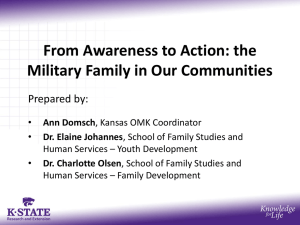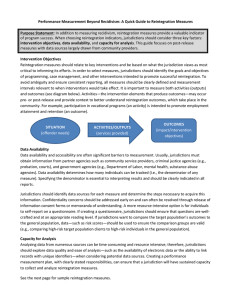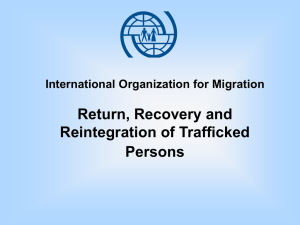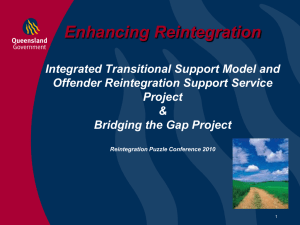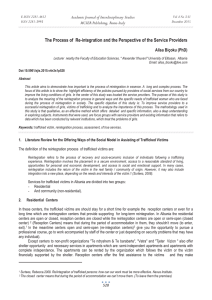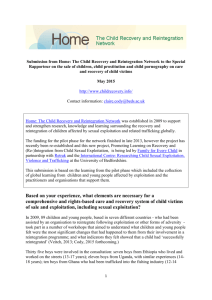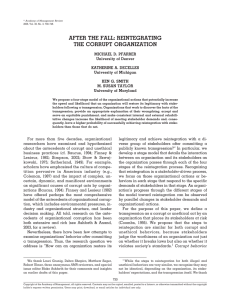Guidance: UNHCR (2014). Analysis tools for reintegration contexts
advertisement
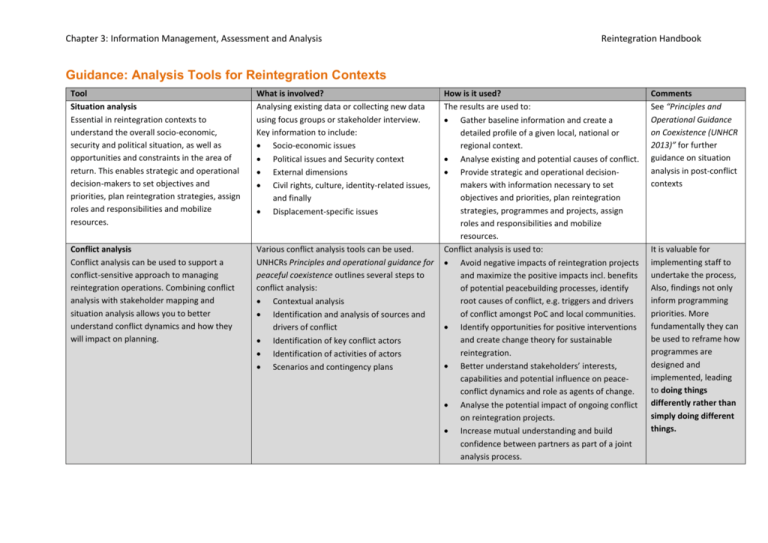
Chapter 3: Information Management, Assessment and Analysis Reintegration Handbook Guidance: Analysis Tools for Reintegration Contexts Tool Situation analysis Essential in reintegration contexts to understand the overall socio-economic, security and political situation, as well as opportunities and constraints in the area of return. This enables strategic and operational decision-makers to set objectives and priorities, plan reintegration strategies, assign roles and responsibilities and mobilize resources. What is involved? Analysing existing data or collecting new data using focus groups or stakeholder interview. Key information to include: Socio-economic issues Political issues and Security context External dimensions Civil rights, culture, identity-related issues, and finally Displacement-specific issues Conflict analysis Conflict analysis can be used to support a conflict-sensitive approach to managing reintegration operations. Combining conflict analysis with stakeholder mapping and situation analysis allows you to better understand conflict dynamics and how they will impact on planning. Various conflict analysis tools can be used. UNHCRs Principles and operational guidance for peaceful coexistence outlines several steps to conflict analysis: Contextual analysis Identification and analysis of sources and drivers of conflict Identification of key conflict actors Identification of activities of actors Scenarios and contingency plans How is it used? The results are used to: Gather baseline information and create a detailed profile of a given local, national or regional context. Analyse existing and potential causes of conflict. Provide strategic and operational decisionmakers with information necessary to set objectives and priorities, plan reintegration strategies, programmes and projects, assign roles and responsibilities and mobilize resources. Conflict analysis is used to: Avoid negative impacts of reintegration projects and maximize the positive impacts incl. benefits of potential peacebuilding processes, identify root causes of conflict, e.g. triggers and drivers of conflict amongst PoC and local communities. Identify opportunities for positive interventions and create change theory for sustainable reintegration. Better understand stakeholders’ interests, capabilities and potential influence on peaceconflict dynamics and role as agents of change. Analyse the potential impact of ongoing conflict on reintegration projects. Increase mutual understanding and build confidence between partners as part of a joint analysis process. Comments See “Principles and Operational Guidance on Coexistence (UNHCR 2013)” for further guidance on situation analysis in post-conflict contexts It is valuable for implementing staff to undertake the process, Also, findings not only inform programming priorities. More fundamentally they can be used to reframe how programmes are designed and implemented, leading to doing things differently rather than simply doing different things. Chapter 3: Information Management, Assessment and Analysis Stakeholder analysis A process of identifying relevant partners and stakeholders and mapping out possible links to their humanitarian and development strategies, projects and programmes as well as needs, goals and interests. Population profiling A method of collecting the characteristics of the population in an aggregated manner that can be generalized to the entire population. It will help to obtain a better understanding of your population of concern whether refugees, IDPs or receiving communities. This will include socio-economic analysis and demographic profiles, aspirations, intentions, needs and assets. Stakeholder analysis involves: Identifying all relevant groups involved in/ affected by a given situation Analysing their perspectives (i.e. interests, needs, positions, resources) Analysing their relationships (with one another and with other entities) Determining how to engage with such stakeholders and identify possible opportunities to act. Population profiling involves: Reviewing existing profiles of the returning refugee community (from the voluntary repatriation process, if available) before undertaking new analysis to avoid duplications. Cross-analysing data from registration database e.g. ProGres, household level surveys, existing participatory assessments, rapid surveys, intention surveys, focus group discussions, key informant interviews and registration data etc. Collecting new data using statistical (surveys) and/or descriptive tools (focus groups and stakeholder interviews). Producing a profile containing core demographic data disaggregated by age, sex and location and any other relevant information (see checklist). Reintegration Handbook Stakeholder analysis: Allows to better understand individuals, groups, associations, organizations and others involved in reintegration contexts and to identify potential partners. Can also be used to identify who influences peace and conflict dynamics in a country and/or a region. Tools include: stakeholder analysis forms and visual mapping Profiling is used to: Obtain baseline information and a subsequent overview of the population to allow better targeting of assistance or understanding the dynamics among the communities. Inform the design of interventions based on needs, intentions etc of PoC. Population profiles should be made of PoC and of receiving communities in areas of return.
